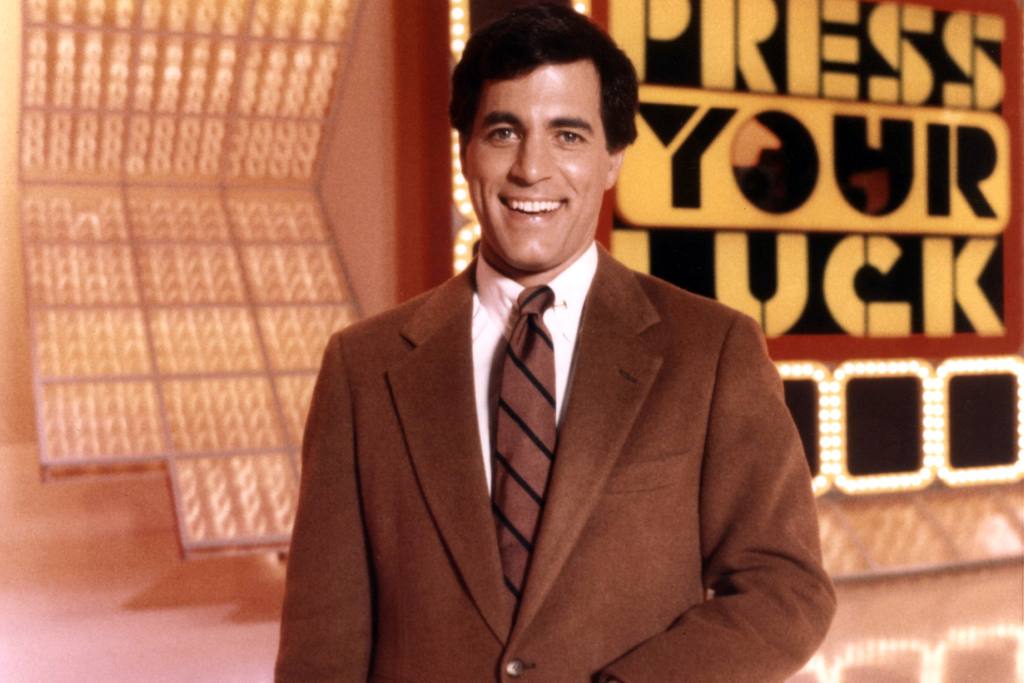1. Press Your Luck’s Whammy Obsession

Back in the ’80s, Press Your Luck wasn’t just about trivia, it was about avoiding those mischievous little Whammies who stole your money with cartoon chaos. The idea of animated creatures gleefully taking away someone’s winnings feels almost too quirky for TV today. Kids loved the Whammies, but contestants definitely didn’t as they watched their totals plummet in seconds. The stakes were weirdly emotional since you could lose everything with a single misstep. It made the show strangely addictive to watch, especially when someone shouted “No Whammy!” like a good-luck spell. The energy was frantic and goofy in a way that feels very ’80s now. It’s legendary, but the randomness would probably make modern producers break into a cold sweat.
The show’s whole vibe was built around teasing disaster, which isn’t exactly the norm anymore. Today’s game shows usually try to make contestants feel supported, not constantly threatened by cartoon thieves. And while the Whammies were beloved mascots, the idea of punishing people with embarrassing animations might come off as too mean-spirited now. Still, the sheer unpredictability of those spins is something fans still talk about. It walked the line between fun and cruel, and that’s not a balance networks gamble with anymore. The concept belongs perfectly to the ’80s, when TV loved anything loud, silly, and slightly unhinged.
2. Card Sharks’ Tension-Filled High-Low Gambles
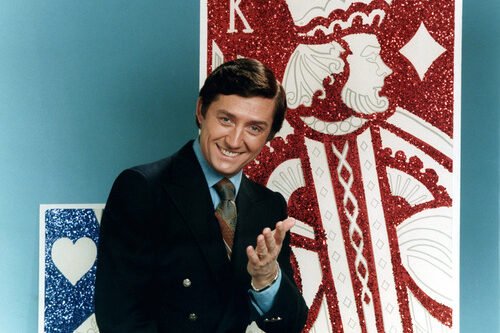
Card Sharks was basically a high-stakes guessing game, but the way the show built tension made it feel like a psychological experiment. Contestants had to guess whether the next card would be higher or lower, and the drama came from how wildly the results could swing. Nothing says ’80s quite like audiences gasping over a sudden flip from a two to an ace. The whole format relied on big, bold reactions and lots of suspense, making the simplest premise feel like a Vegas showdown. Today, producers might shy away from such extreme gambling energy on daytime TV. But in its heyday, it held everyone’s attention with just a deck of oversized cards. It was proof that even the basic things could feel huge on TV.
Modern game shows are a lot more structured, and they usually avoid moments where someone can wipe out their entire score in seconds. The emotional roller coaster of Card Sharks was part of its charm, but it also made the stakes feel surprisingly personal. Seeing someone lose a fortune on a single wrong guess could feel harsh by today’s standards. Still, that unpredictability kept viewers glued to the screen. It offered excitement without complicated rules, which is something you don’t see much now. The show thrived because it trusted its audience to enjoy that raw suspense.
3. Supermarket Sweep’s Wild Grocery Runs

There was something wonderfully chaotic about watching grown adults sprint through aisles with carts like they were racing the clock at a Black Friday sale. Supermarket Sweep turned an ordinary grocery store into an obstacle course, and the show loved every bit of the mayhem. Contestants grabbed giant hams, turkeys, and detergent bottles like they were precious gems. The frenzy was pure ’80s entertainment, bursting with energy that felt almost cartoonish. Today, safety coordinators would probably faint seeing contestants dart around sharp corners with carts flying everywhere. It was part shopping spree, part comedy sketch, and all fun. It had a charm that came from its absolute disregard for subtlety.
Modern network standards would likely shut down the whole concept in five minutes. Liability issues alone would be enough to make executives nervous. And the idea of turning grocery shopping into a full-contact sport feels a little too wild for today’s tamer formats. Still, that unpredictability is exactly what made it memorable. It felt like watching everyday people become temporary stunt performers. The nostalgia for it is strong because it was so unapologetically silly and joyful.
4. Win, Lose or Draw’s Celebrity Living Room Setup

The ’80s loved anything that felt casual and fun, and Win, Lose or Draw leaned right into that. The whole game took place in a set designed to look like someone’s living room, complete with couches, coffee tables, and wall art. Contestants and celebrities teamed up while one person tried to draw a clue on an erasable board. It was messy, spontaneous, and often hilarious. The informal vibe made it feel like you’d stumbled into a game night with stars who didn’t take themselves too seriously. Today, the low-key setup might seem too relaxed for prime-time. But it created an atmosphere that felt intimate and friendly.
Modern game shows usually lean into slick sets, high-tech screens, and polished production. The cozy aesthetic of Win, Lose or Draw would be considered too minimal now. Producers often want flash, while this show won people over with personality. It thrived because it didn’t pretend to be anything prestigious, it was just about having fun. That looseness was part of its magic, something today’s TV rarely embraces. It was a snapshot of a different era of entertainment, when charm mattered more than spectacle.
5. Let’s Make a Deal’s Bizarre Costumes and Chaos
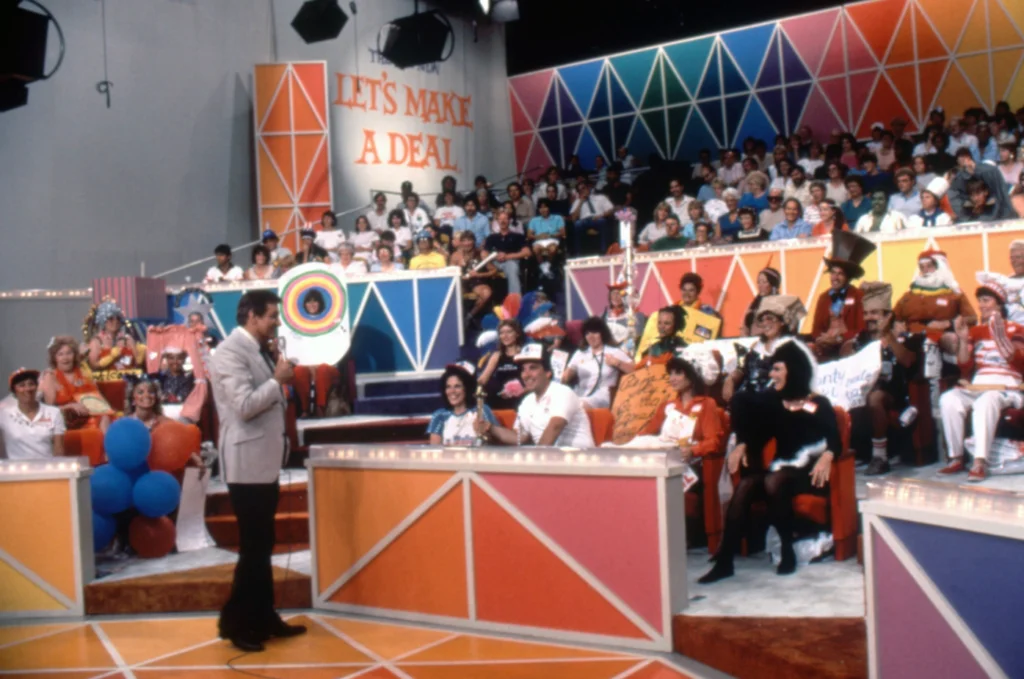
Contestants on Let’s Make a Deal often showed up dressed like giant pieces of fruit, clowns, or household appliances just for a chance at winning something behind a curtain. The costumes were half the entertainment, and the unpredictability made the show famous. It didn’t matter how ridiculous someone looked, the whole point was to commit to the bit. And audiences loved watching people gamble between a shiny prize or the dreaded “zonk.” Today, you probably wouldn’t see such full-on costume culture on a regular game show. It’s too chaotic and too visually overwhelming for most modern formats. But in the ’80s, bigger was always better.
Modern producer notes would probably insist on toning down the wackiness for fear of distracting from the gameplay. But Let’s Make a Deal thrived on that exact energy. The contestants’ creativity made the show unpredictable in the best way. Now, the idea of encouraging people to dress like anthropomorphic vegetables on national TV might feel too gimmicky. Still, that exuberant vibe is a reminder of how colorful ’80s TV really was. It was messy, loud, and endlessly fun.
6. Double Dare’s Slime-Drenched Physical Challenges
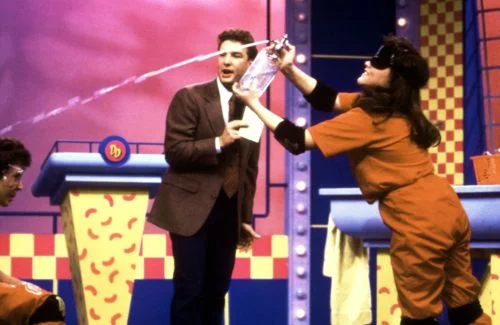
No show embraced messy chaos quite like Double Dare. The whole concept revolved around slime, whipped cream, foam, and giant props that belonged in a cartoon. Contestants crawled through tunnels of goo or fished around in oversized noses for flags. It was everything a kid loved about making a mess, broadcast to millions. Today, network standards would immediately ask about hygienic concerns and risk management. But in the ’80s, it was all part of the fun. The show felt rebellious and kid-powered.
Modern game shows tend to avoid anything that involves multiple gallons of slime and potential slips. But the controlled chaos of Double Dare was carefully designed to be fun rather than dangerous. Still, the mess factor alone would make today’s producers raise an eyebrow. Yet its legacy remains because it tapped into something so purely joyful. It was a celebration of childhood silliness that’s hard to replicate now. The charm is unforgettable because it was so unapologetically over-the-top.
7. Remote Control’s MTV-Style Absurdity

MTV’s Remote Control didn’t look or feel like a traditional game show at all. It took place in a basement decked out with posters, mismatched furniture, and a host who leaned into the comedy. Contestants answered pop culture questions from recliners, and the whole show had a rebellious teen attitude. It was quick, quirky, and filled with unexpected sketches. Today, networks might find the style too informal or too odd for a standard game show slot. But in the ’80s, it fit right in with MTV’s weird and wonderful vibe.
Modern formats prefer polished environments and clear rules, while Remote Control thrived on unpredictability. The humor was sometimes surreal, and the whole atmosphere felt like a late-night hangout with friends. That looseness is rarely embraced in today’s more controlled productions. But it was the perfect representation of its era. It broke rules on purpose, something modern TV rarely allows. The show’s cult following proves just how refreshing that irreverence was.
8. Pyramid’s Intense Lightning Round Pressure
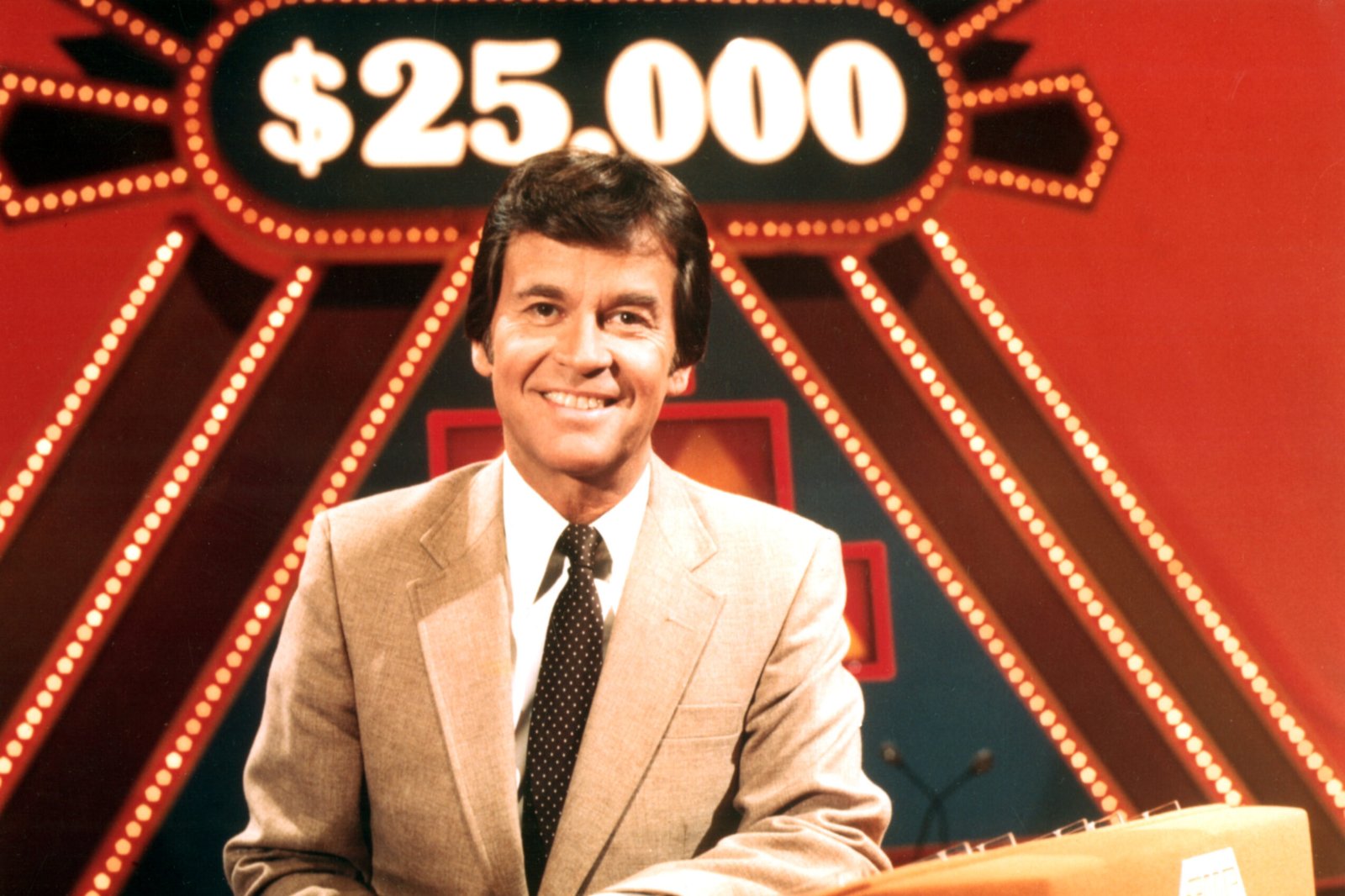
The Pyramid franchise was famous for its high-speed lightning rounds, where contestants had to guess rapid-fire clues under extreme pressure. The celebrity partners would rattle off hints so quickly that it sometimes felt like verbal whiplash. Watching people panic, freeze, or suddenly triumph in the last second was a huge part of the entertainment. But the intensity of that final minute could be overwhelming, especially when thousands of dollars were on the line. Today’s game shows tend to soften the edges a bit, giving players more breathing room. In the ’80s, though, the faster and more stressful it looked, the better.
Modern producers might worry the frantic pace could make the game feel too stressful for casual viewers. But back then, the speed was the whole point, and it made fans lean forward in their seats. The pressure cooker energy gave the show its signature identity. Seeing celebrities sweat under the clock was part of the fun. Now, that level of rapid-fire tension might seem a little too intense for family-hour TV. But for the ’80s, it was exactly what audiences craved.
9. Sale of the Century’s Big-Spending Temptations

This ’80s staple tempted contestants with luxurious prizes like cars, vacations, and designer goods. The twist was that they had to decide whether to spend their hard-earned points or hold out for something even better. It made for tense decisions that looked glamorous on TV. Nowadays, the idea of encouraging such consumerist frenzy might feel outdated. But in the ’80s, it felt like the peak of televised extravagance. Every prize was presented like a once-in-a-lifetime dream.
Modern viewers expect either huge jackpot shows or smaller, casual formats, not something caught in between. Sale of the Century thrived on the thrill of temptation and suspense. It leaned into materialism in a way that feels uniquely tied to its decade. Now, the pacing might seem too slow or the stakes too strange for modern tastes. But back then, it pulled people in with pure aspirational excitement. The whole concept glowed with ’80s ambition.
10. Truth or Consequences’ Emotional Surprises
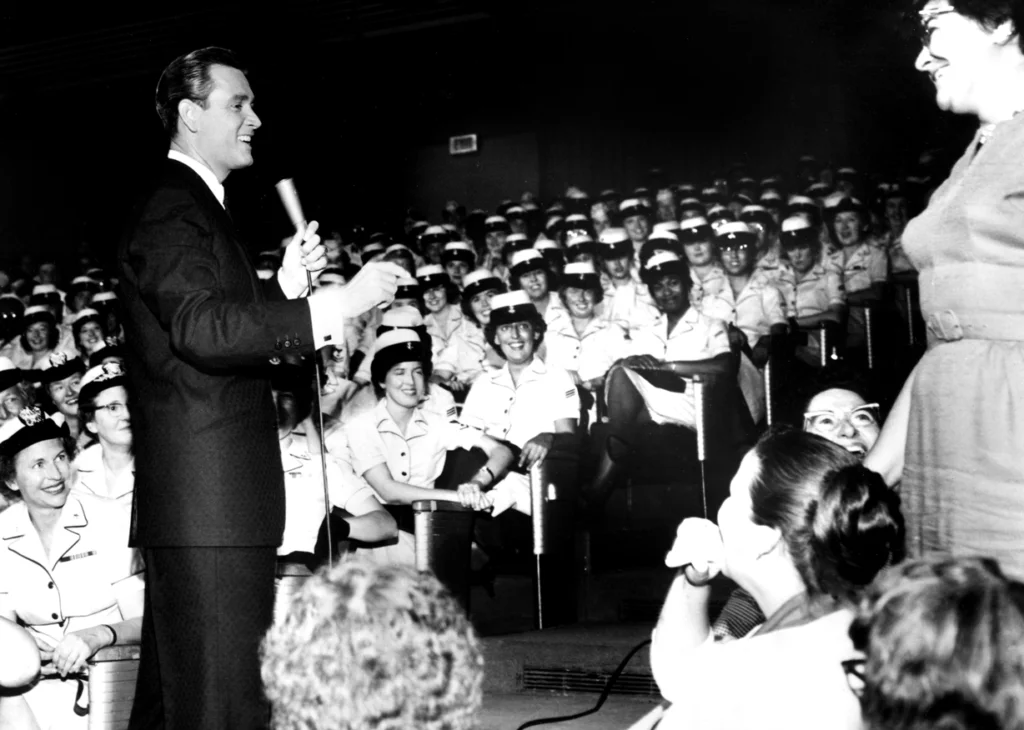
While it started decades earlier, Truth or Consequences still ran into the early ’80s with its mix of stunts and sentimental surprises. Contestants answered a silly trick question and, if they got it wrong, they had to perform an embarrassing or goofy task. Sometimes, the show surprised them with a touching reunion or heartfelt moment. Today, mixing pranks with emotional beats might feel too manipulative for audiences. But at the time, it was beloved for keeping viewers on their toes. It blended humor, emotion, and unpredictability.
Modern shows tend to separate heartfelt content from comedy, keeping everything in neat categories. Truth or Consequences didn’t care about categories at all. It swung between goofy stunts and emotional reveals without warning. Now, that might feel confusing or too intense. But its chaotic mix was part of its charm. It lived in a world where anything could happen, and that’s why people watched.
11. Tic-Tac-Dough’s Dragon Challenge

This quiz show looked simple at first glance, but once the dragon popped up, everything changed. The dragon was a surprise element hidden behind gameboard squares, and landing on it wiped out everything a contestant had earned. It added a sudden-jolt tension that felt almost unfair. That kind of harsh mechanic would raise eyebrows today for being too punishing. But viewers back then loved the adrenaline rush. It made every move suspenseful, even though it was just a glorified game of tic-tac-toe.
Modern game shows try to keep losses more predictable and less cruel. Having an element that could wipe out progress without warning now feels out of step with viewer expectations. But in the ’80s, the dragon was a beloved villain. It gave the show personality and drama. The concept thrived on that risk, something networks would probably scale back today. It was pure ’80s high-stakes fun.
12. Name That Tune’s Head-to-Head Showdowns
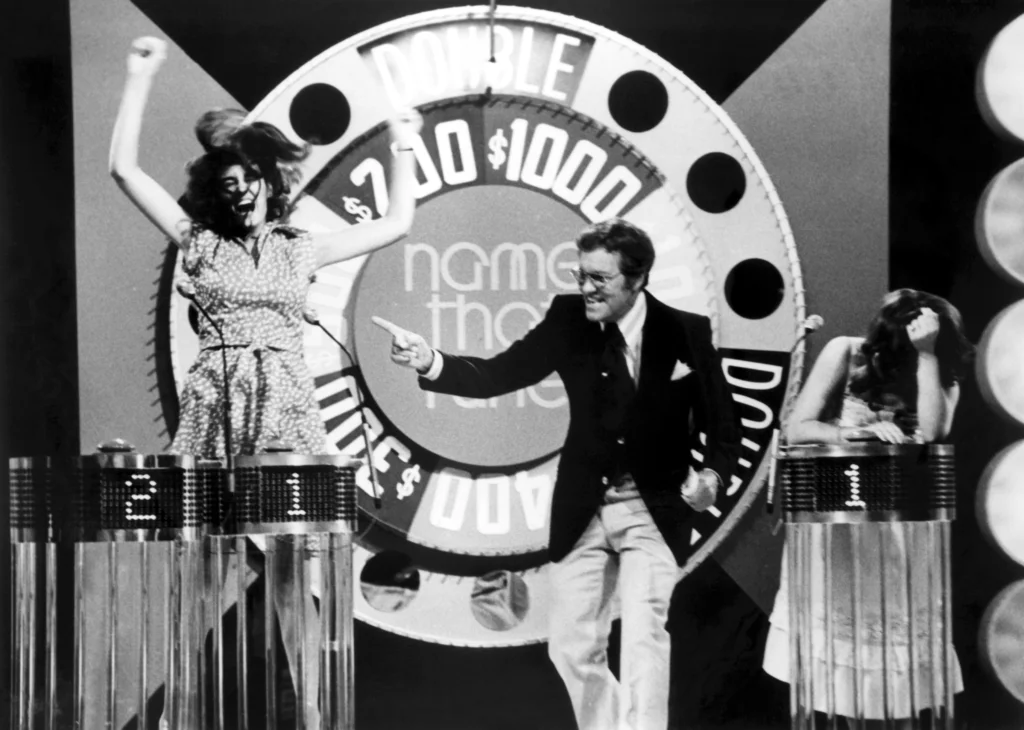
Name That Tune created intense musical duels where contestants battled to identify songs with as few notes as possible. The “Bid-a-Note” segment could get especially dramatic as players tried to outsmart each other. The pressure was real, since messing up meant losing big opportunities. Today, that kind of head-to-head showdown might feel almost too cutthroat for a lighthearted game show. But in the ’80s, competitive tension was practically a requirement. The show lived on those razor-thin margins.
Modern formats often try to soften the edges with more teamwork or friendlier pacing. Name That Tune asked contestants to make bold, risky calls in front of a crowd. That intensity might feel too sharp for some viewers now. But it made the show unforgettable. The format still fascinates fans because it rewarded both confidence and quick thinking. It was the perfect blend of pressure and fun.
13. The Newlywed Game’s Embarrassingly Personal Questions
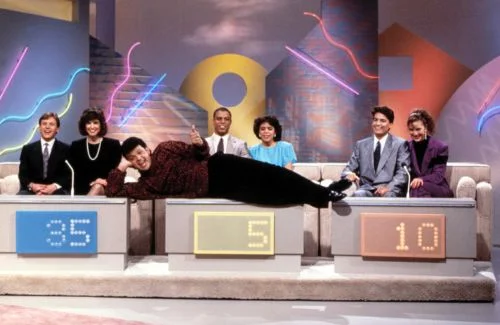
Few ’80s game shows pushed boundaries quite like The Newlywed Game. Contestants answered revealing questions about their marriage, often leading to blush-worthy confessions or awkward mismatches. The humor came from how honest, and sometimes brutally candid, the answers were. Today, those questions would likely be considered too intrusive for daytime TV. But back then, viewers loved the mix of romance and chaos. It felt playful rather than invasive.
Modern producers would probably dial back the personal topics to avoid discomfort. But The Newlywed Game thrived on that exact tension. It relied on people being surprisingly open on national TV, something audiences can’t always expect now. The show’s charm came from how unpredictable the couples could be. It’s a format that feels very rooted in its time, when TV loved leaning into real-life awkwardness.

